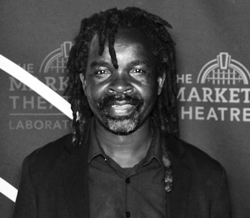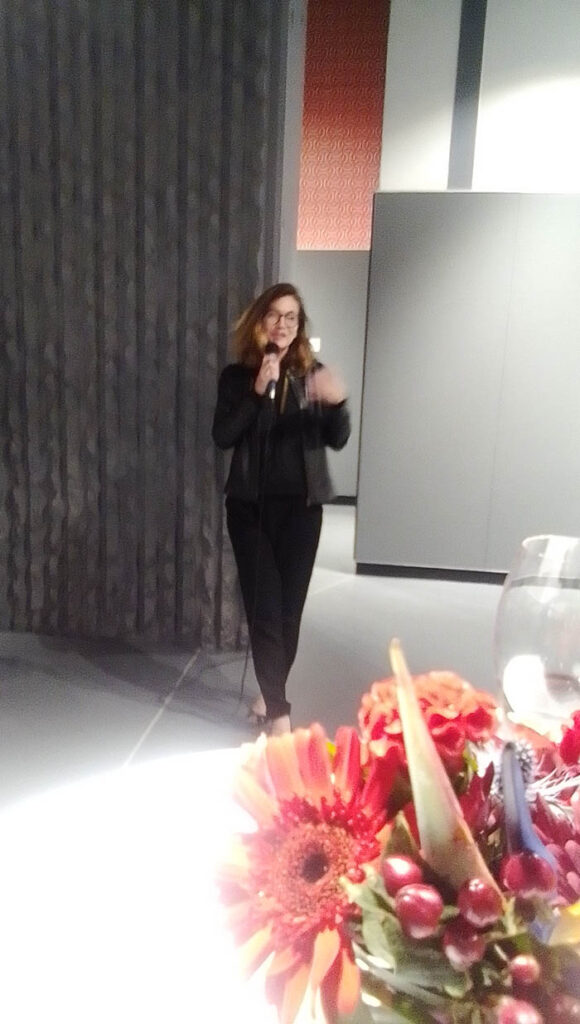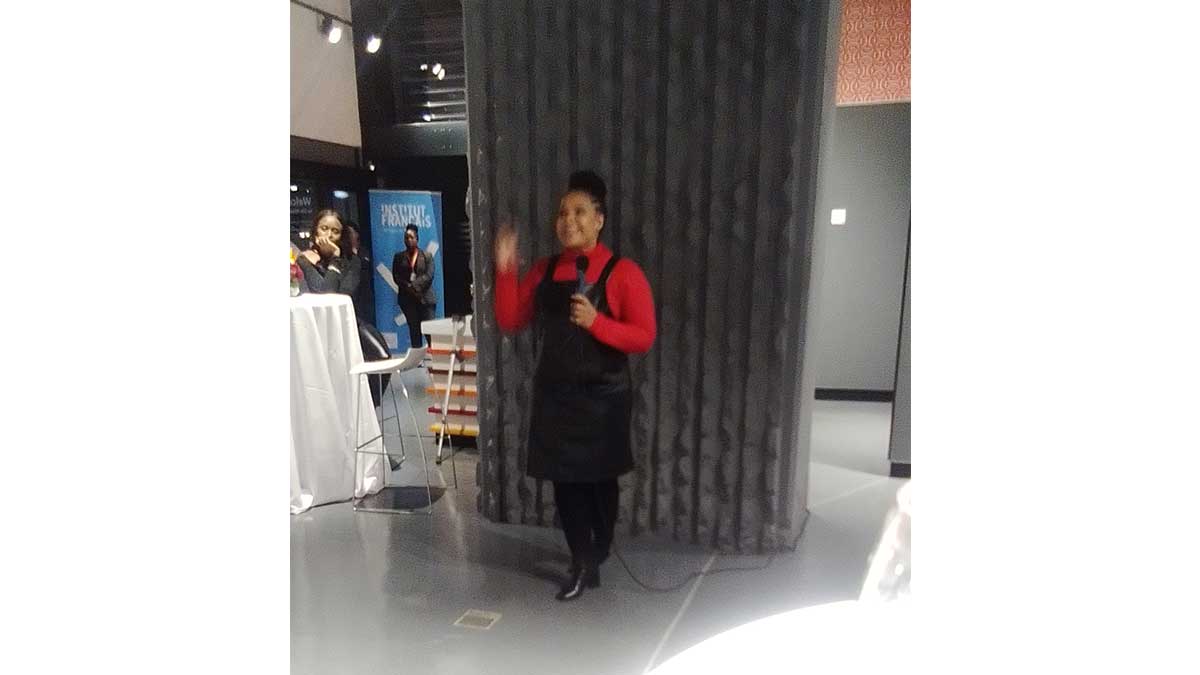Nyokong’s exhibition at ABSA Gallery probes issue of Benin’s stolen sculptures during colonialism
The exhibition of the 2019 ABSA L’Atelier award winner which opened on Thursday, 20, 2023, runs till end of May 2023, after which it will tour the country.
By Edward Tsumele, CITYLIFE/ARTS Editor

From a distance of five metres, the artworks on the wall give a viewer the illusion of seeing sad looking figures of sculptures standing against a painted background. But coming closer you then realise that you are actually looking at painted sculptural figures.
Artist Nyokong, in this solo exhibition gives new interpretation of the fate of the famous Benin art works that have been raided from Africa to be displayed in European museums. Stolen during colonialism and slavery, they remain there to date. In those museums, these important works that are a representation of some of the deepest scared rituals of the African people are even most probably displayed out of context due to inadequate knowledge about what message the creators of these works wanted to tell through these works of their hands and minds. In further degrading their value, religious symbolism and historical perspectives, the creators of these works remain unacknowledged as they are credited as creators as “artist unknown”.
I was particularly struck by a few artworks immediately after entering the museum, one titled the School of Benin, another series of three drawings titled Drawings of the Confused (there are the only drawings in this exhibition as the rest are paintings) and another one titled Benin Conference. This is clearly a subversion of the Berlin Conference that saw European powers sit on a table to decide the fate of African countries –deciding which African country belonged to which European country, in the process drawing crude, arbitrary borders creating a headache for Africans. Ironically African leaders in independent counties not only embraced those borders, but in contemporary times, jealously guard and defend as If they were a product of a well thought out plan or legal process
Through this important body of work, Nyokong is therefore creating an opportunity for a viewer to go back in years into what happened to the Benin art works in the hands of colonists and slave masters. Looking at these works, you almost feel the tension depicted by the various scenes of what may have happened during the raiding of those works as well as its aftermath.
These paintings though do not depict human figures but sculptures that have been painted and seem to be in a deep contemplative mood, perhaps revealing the dark side of what happened to these sculptures and their creators. As you move around the gallery viewing these art works, you cannot escape confront complex questions being raised by this exhibition. You will not be easily fooled by the artworks’ superior aesthetics as the deeper uncomfortable story of the tragedy of colonialism and the raping of the African continent and its art heritage is soon to be noticed in this exhibition.

This exhibition clearly opens yet another opportunity for visitors to engage in the ongoing conversation about African created artefacts that are today scattered in Europe in various European countries’ museums, far away from where they were taken and therefore inaccessible to Africans.
This exhibition is a well-researched piece of scholarly work, aesthetically prudently executed and intellectually engaging to the viewer. Those who attended the opening of Museum of the Confused at ABSA Gallery on Thursday, April 20, 2023, were given a window into what happened to the Benin sculptures in particular and African artworks in general that are now the preserve of Europeans. The guests were given an opportunity to ponder the issue of what now happens to those works.
In recent years debate has been raging among intellectuals, heritage researchers and activists who have been calling for the return of those art works. Therefore this body of work the ABSA L’Atelier Gerard Sekoto award winner for 2019, through this solo exhibition, revisits that question. The answer however is not that simple. For example If the artworks are returned to their rightful countries of origin, is there enough suitable museums to house them? This question is particularly relevant given the situation that most African countries find themselves in when it comes to preserving especially delicate art works that need tender care. Fat is there is simply a lack of suitable infrastructure – museums well equipped to handle such delicate works, the debate goes.
Is it not therefore better for example to have a kind of loan agreement with these museums whereby they get to keep the works, on condition they pay annual fees to the countries from which they stole the artworks instead of returning them to a situation where the art works are certain to degrade and become valueless eventually for lack of suitable infrastructure. This is just a question.
As you view this exhibition and ponder about the fate of the African art works currently in the hands of European museums, this question is likely to confront you. However as Genevieve of the ABSA Money Museum, who opened the exhibition said, the artist does not give you an answer to that difficult question through this exhibition, but gives you the viewer an opportunity to engage that question through viewing these art works.
Booking.comThe Gerard award winner gets an opportunity to go on a three month residency in Paris, but in the case of Nyokong, that did not happen.
“Nyokong is our 2019 ABSA L’Atelier Winner, but because Covid-19 happened and prevented him from travelling to Paris, he had his residency instead at Nirox (a vibrant arts hub situated in Krugersdorp),” said Dr Paul Bayliss senior art specialist and curator at ABSA during the opening. Bayliss praised the collaboration between the French Institute in South Africa (IFAS) and ABSA, noting that soon they will be celebrating the collaboration’s 20th anniversary. The opening was also attended by representatives of IFAS, including its director Sofia?










